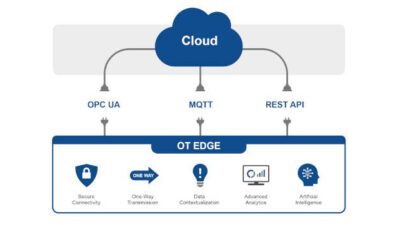A new company out of Lafayette, Colo., called myDIALS, introduced in February what it says is the first hosted software solution for template-based development of interactive displays to analyze operations, production, and business metrics. Tools maker Snap-on already is rolling out the solution to 4,000 users.
The idea of using “dashboards” to support management decision-making would seem to be just what the doctor ordered. Track the right operational and financial parameters and, with the appropriate analysis applied, “subjective” insight can be replaced by fact-based judgments.
A new company out of Lafayette, Colo., called myDIALS , introduced in February what it says is the first hosted software solution for template-based development of interactive displays to analyze operations, production, and business metrics. Tools maker Snap-on already is rolling out the solution to 4,000 users.
It turns out that dashboards are proliferating, however, somewhat differently than originally conceived.
Geoffrey Moore is best known for his books Crossing the Chasm and Inside the Tornado , which analyzed how technology companies find success. “The vision of computer-aided management based on the identification of a few key parameters doesn’t seem to be happening,” says Moore. “These tools for real-time performance management serve the front lines well. But upper management is primarily a social function.”
In fact, the folks at myDIALS—many of them veterans of supervisory control vendor Citect —have noticed much the same thing.
“I thought we’d proceed from the executive level down,” says Wayne Morris, myDIALS CEO. “But that’s actually been turned around by the companies we’re working with, which [typically start by giving line workers access to the system].”
Snap-on is using the dashboard to keep its independent sales representatives informed of their performance, and to track safety initiatives, but myDIALS sees its solution’s application falling in supply chain management, lean performance, and continuous improvement as well.
The approach myDIALS is taking provides several distinct advantages, Morris says. First, as a hosted, or SaaS-based solution, a myDIALS dashboard can easily be used by several companies acting in concert across a supply chain. Second, through an emerging partner ecosystem, myDIALS can increasingly embody vertical-industry expertise, improvement methodologies, and best practices that can be customized by a company and personalized for a specific role.
“Previous generations of dashboards have tended toward being a tool kit. We’re embedding content,” says Morris.
Data source templates reduce deployment time, and the intelligent metrics processor (IMP) delivers continuous data analysis, combining operation metrics—often consisting of time-series data—with business metrics—i.e., transactional data.
“When companies turn to spreadsheets to combine business and operations metrics, they inevitably end up with conflicting metrics. Consistent data leads to aligned behavior,” concludes Morris.
That alignment in particular is the benefit for Snap-on.
“With myDIALS,” says Jeanne Moreno, Snap-on VP and CIO, “we’re getting out of the business of constructing metrics and continually writing reports. Safety and worker’s compensation have a cause-and-effect relationship, and the combined analysis helps us improve safety and lower overall health costs.”
Caption for graphic:
Once value streams, roles, and performance indicators are defined, data sources are identified, and integration accomplished, each user can access their KPIs to view and analyze business performance.



